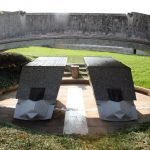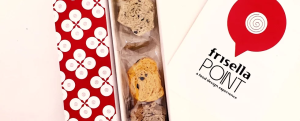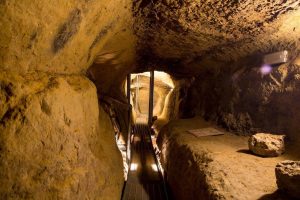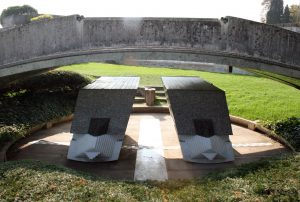Tuscania is out of the way and still no one, who is not from those places, knows the beautiful path that leads from Etruscan and papal Vetralla to Etruscan and papal Tuscania between meadows and woods. “Long shadows ran on the ground, the first shadows of the evening ran from west to east similar to sea waves and seemed to come out of the Etruscan tombs dug into the tuff walls overlooking the Marta, we were in the heart of the Etruscan town, in the ancient Toscano“. Curzio Malaparte in the posthumous collection entitled “Benedetti Italiani” describes Tuscania and the Tower of Lavello in this way. From the shores of the great Lake of Bolsena begins the journey in the tuscia following the path marked by the river Marta which from here starts to flow into the Tyrrhenian Sea crossing the land overlooking the sea. Etruscan land, a land that tells stories of past times. The imposing lake of Bolsena is the fifth largest in Italy and is also the largest lake of volcanic origin in Europe; it was born in the main volcanic cone of the volcanic complex of vulsinio, the villages and towns that overlook it are very rich in history, for example Montefiascone, Bolsena, Capodimonte, Marta and then two islands, La Visentina and La Martana. Queen Amalasunta, daughter of Theodoric King of the Ostrogoths and of Italy, in 526 AD. had obtained the regency but she was forced to marry her cousin Teodato who relegated her by deception to the island of Martana. In 535 A.D. she was killed by her husband’s assassins. The place where she was killed is a place where there is an uncontaminated nature and a wealth of fauna and flora due to the presence of many waterways that are part of a very dense river network. The main waterways are the Marta, which flows from Lake Bolsena to flow into the sea of Tarquinia, and the Fiora whose sources are on Mount Amiata in the Grosseto area and which flows into the sea of Montalto di Castro. It was here that several Etruscan settlements had to rise. We are not in Provence and yet there is an immense field of lavender, with that scent that reminds us of grandmothers. They did this: they took bags, filled them with lavender seeds and then scattered them inside the wardrobe among the linen. That’s how Tuscia is, it always amazes you, never a territory the same as another, peaceful both the soul and the eyes. Now we move to Tuscania. Etruscans have always been spoken of in a rather singular way; it is a civilization that has left great testimonies both for what concerns the more typically urban aspects and what concerns the necropolis. Let’s say that this area should be considered almost a macro region that also includes the territories located north of Rome, from Veio Cerveteri to then end near the current borders of Liguria and include a small part of Umbria. Crossing the countryside of Tuscia it happens to be faced with an unexpected spectacle: the Rocca Respampani; it was built in 1607 with the intention of erecting a real village. In reality, the ambition was not only to give home to the nobles but also to all the peasants. The idea could also have been good especially due to its strategic proximity to other important cities in the area, but the lack of communication routes made it mercilessly unsuccessful. The village of Monte Romano was built near the busiest Aurelia and since 1700 Rocca Respampani remains completely forgotten. Descending from the path that starts from the castle, we are presumably on the ancient route of the Via Clodia, a very important communication artery between the Cassia, starting from Veii, and the Aurelia up to Saturnia. It crosses Bracciano, Vetralla and Tuscania. Dug out of the natural tuff, it represented the main road for trade with all this air and it was very useful for the Romans to conquer the entire Etruscan territory. An ancient testimony is the planting of all the stones, the so-called basolato, which was the classical system used by the Romans for the construction of roads. The legendary bridge of Fra Cirillo crosses the Traponzo river which is a tributary of the Marta river; the legend tells how this place was built in just one night, for a bet lost between the friar and even the devil. Looking east you can see the tower of Rocca Respampani, or rather it is the tower that looks at the bridge, controlling any hostile passage on the territory. This place is a real history book. Crossing one of the many coppice woods that characterize the area in the direction of Tuscania, I found myself as if by magic inside an Etruscan necropolis. From a hole there is access to one of the many mortuaries that are scattered along this ridge. But I have not yet told you about the real wonder: the Porcareccia. The noun was conceived by the Romans, in Latin it means stable for pigs and then over the millennia it has not only been a shelter for pigs but also for cows and sheep, even for humans. In some of these caves dug by the Etruscans as a tomb, fireplaces and beds and channels to let the waters flow were also found. Who knows such a beautiful place only an hour from Rome? Now me.
The Badia bridge or popularly called the Devil’s Bridge is a daring construction that dates back to the fourth century BC and was subsequently reused in Roman times and definitively refurbished in the Middle Ages. The bridge is currently undergoing restoration; the works will give it new life and new impulse and will make it usable again in the solitude of places.













